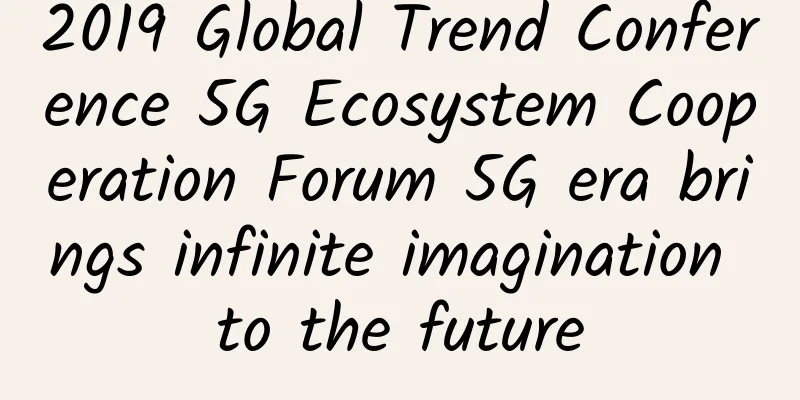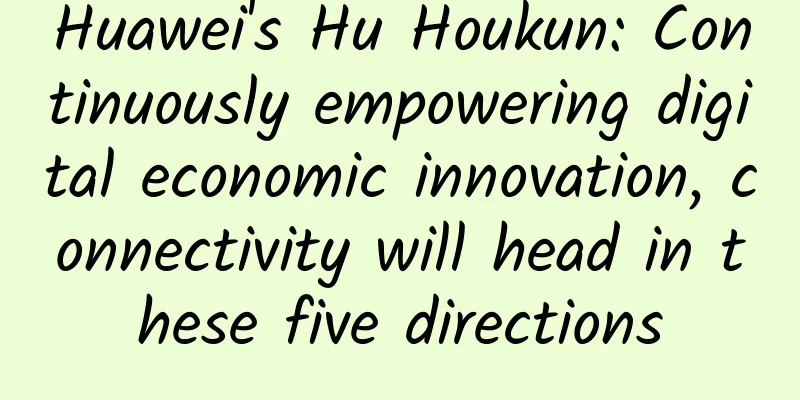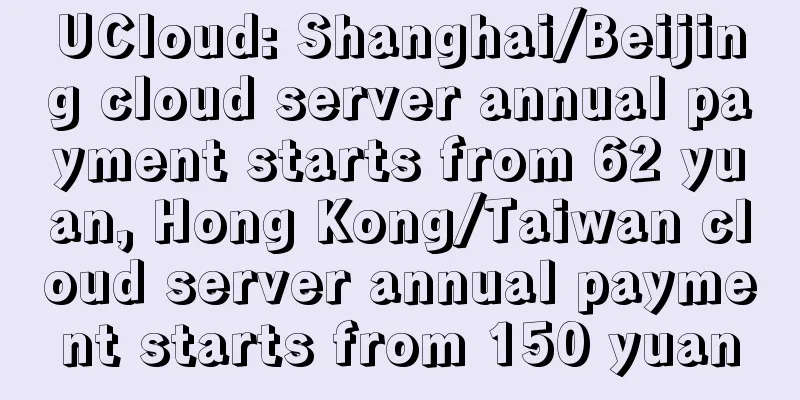2019 Global Trend Conference 5G Ecosystem Cooperation Forum 5G era brings infinite imagination to the future

|
From November 28th to 29th, the "2019 Global Trends Conference" co-hosted by Global Times and Huanqiu.com and co-organized by Huanqiu.com and Zhonghong.com officially kicked off at the Kempinski Hotel Beijing. Against the backdrop of the 70th anniversary of the founding of New China, this conference took "Business, Development, and Mission" as its theme and "Time Mission, Innovation Integration" as its starting point. It invited leaders responsible for optimizing the business environment of local governments, well-known scholars, and representatives from various outstanding enterprises and social organizations, totaling more than 1,000 people, to discuss "Global Trends" together, stimulate ideas, and exchange experiences. The "2019 Global Trend Conference" consists of three main forums: the Business Environment Summit Forum, the Global Trend 5G Ecological Cooperation Forum, and the International Innovation Driven and Industrial Cooperation Forum. At the same time, the "Global Night" theme event and the "Golden Trend Award" ceremony were held on the evening of November 28.
If we talk about the most eye-catching scientific and technological achievements in 2019, it is the official commercialization of 5G network. The imagination of the past has now become a reality. As the 5G network gradually completes its coverage, what kind of future will 5G bring us? At the 5G Ecological Cooperation Forum held on the 29th, Zhang Long, 5G technology expert of China Mobile Research Institute, Xu Hao, head of R&D of Qualcomm China, Ma Heng, deputy general manager of 5G industry MKT of ZTE Corporation, Li Yunpeng, founder, chairman and CEO of Tianshu Zhixin, Xu Yuanchun, general manager of the artificial intelligence creation and business division of Microsoft (Asia) Internet Engineering Academy, and Xu Hongji, innovation architect of Daimler Innovation Incubator, took the three major characteristics of 5G as the entry point and discussed the future development direction of 5G network in networking advantages, chip and network integration, intelligent manufacturing, Internet of Things, artificial intelligence and autonomous driving and other popular applications from their respective industry backgrounds. Zhang Long, 5G technology expert of China Mobile Research Institute and deputy leader of TC5 WG9 of Wireless Technology Working Committee of China Communications Standards Association, first delivered a keynote speech with the theme of 5G+ for a better future. Zhang Long first reviewed the issuance of 4G licenses on December 3, 2013. In just 6 years, it has brought earth-shaking changes to our lives. Now 5G has been officially put into commercial use. The characteristics of high speed, low latency and wide connection in the 5G era will profoundly change our lives and society, improve our quality of life and change the way of production. Zhang Long said, "In order to better promote the development of 5G, China Mobile has also officially proposed the 5G+ plan, which includes three parts. The first is 5G+4G. 5G and 4G will coexist for a long time. We use 5G+4G to build a strong connection capability to meet customers' basic connection needs. We call it 5G's introspective capability. The second is 5G+'AICDE', which is integrated with some advanced technologies such as the Internet of Things, cloud computing, and big data to form 5G's extended capabilities. The third is 5G+ecosystem. We hope to work with our partners to create a rich variety of industry capabilities and build a good ecosystem. We call it the general capability of industry applications." Zhang Long said: "We hope to empower all walks of life and realize 5G+X by integrating 5G's intrinsic capabilities, 5G's external capabilities and the industry's general capabilities. We hope that 5G will become the main artery of social information flow, an accelerator for our industrial transformation and upgrading, and a new cornerstone for our digital society construction." Xu Hao, head of R&D for Qualcomm China, delivered a keynote speech on "5G+AI Empowering the Intelligent Connected Future", sharing his views on the practical application of 5G and the combination of 5G and AI. He also vividly illustrated the changes that 5G can bring to various industries and the better life it can bring to everyone through many cases. Xu Hao introduced that since 3GPP froze the first version of the 5G international standard (R15) in 2018, many countries and regions around the world have announced the commercial use of 5G, involving more than 30 telecom operators. At the same time point in the 4G era, only four telecom operators in the world announced the commercial use of 5G. The speed of 5G commercialization can be seen. As for the actual application of 5G, many consumers still think that 5G mobile phones can only measure speed. Xu Hao gave an explanation from the perspective of international standard setting. He pointed out that the currently frozen R15 standard focuses on the basic architecture and enhanced broadband of 5G, including the introduction of millimeter waves, large-scale antenna technology, new coding technology, new network slicing technology, etc., to provide wider signal coverage and ensure faster network speeds. The specific application is reflected in the smartphones closest to consumers. The R16 standard, which is nearing the end, and the subsequent R17 version will pay more attention to the promotion and application of 5G in other industries and vertical fields, including high reliability and low latency, 5G Internet of Vehicles, unlicensed spectrum technology, etc., which will become the technical support for other widespread applications such as 5G industrial Internet of Things and autonomous driving. Ma Heng, deputy general manager of 5G industry MKT of ZTE Corporation, said in his keynote speech, "What does the arrival of the 5G era mean to us? From a macro perspective, from 2G to 4G, everyone has deeply felt the changes in all aspects of life. With the arrival of 5G, new connections represented by large bandwidth are also coming, and this connection is two-way. We know that in 4G, watching mobile videos is a good experience. But everyone found that when uploading larger data, the mobile phone will become very slow and keep spinning. 5G solves these problems very well." Ma Heng said. When talking about the impact of 5G on industrialization, Ma Heng proposed the concept of "four transformations": flexible product supply, humanized work scenes, virtual and real human-computer interaction, and intelligence. Xu Yuanchun, general manager of the AI Creation and Business Division of Microsoft (Asia) Internet Engineering Academy, shared his views on the topic of "AI and AI Creation". "Using algorithms and machines to simulate the right brain of human beings and let machines have the ability to create human culture and art may be the most mysterious and fascinating ability that humans themselves think of. This is also a direction for us to explore," said Xu Yuanchun. Since 2017, Microsoft XiaoIce has studied the works of about 519 modern Chinese poets since 1920. Previously, Microsoft XiaoIce published the first poetry collection in human history that was 100% created by artificial intelligence, "The Sun Lost the Glass Window", which presented the human emotions such as loneliness, sadness, expectation, and joy taught to her by 100 million users in the form of poems through 10 chapters. Xu Yuanchun also said at the meeting: "I can tell you 100% that writing poetry will definitely not make money. So what can it do? Because this is an algorithmic research. When we can achieve the creative ability of poetry, other text generation capabilities will be relatively simple for us." Today, Microsoft XiaoIce has applied its accumulation in poetry to real-life scenarios, helping many listed companies push all summary information to individual and institutional investors within 5 seconds. Tianshu Zhixin CEO Li Yunpeng also attended the 5G Ecosystem Forum and delivered a keynote speech. He said, "From a technological perspective, mankind has experienced four waves of technological progress. Now we are witnessing a new wave of technological progress, that is, 5G is a very good representative. It brings a larger dimension and diverse capacity of data itself. If 4G changes life, then I think 5G changes society. If 4G makes people more convenient, 5G must make people, enterprises and businesses in society more convenient. From a business perspective, with the advent of the 5G era, cloud capabilities are gradually extending to edge cloud and bringing huge demand for edge cloud computing." Li Yunpeng explained that in the data-driven era, everyone's fundamental needs are how to effectively manage and coordinate resources, how to analyze and provide feedback in a timely manner, and at the same time, be able to monitor and judge equipment in operation in real time. Xu Hongji, chief innovation architect of Daimler Innovation Incubator, also shared his views on the future of 5G in his speech. He first said, "As a global organization, Daimler mainly undertakes innovation responsibilities in three aspects: incubator, accelerator and connector. During this period, we will give each startup company corresponding innovation themes and scenarios." When talking about why Daimler would accelerate "unicorn" companies like SenseTime, Xu Hongji explained: "In 2017, we discussed with SenseTime how to apply visual AI technology to the automotive field. After more than 100 days of continuous discussion and implementation, Daimler applied some of SenseTime's innovative technologies to the entertainment system inside the car, as well as the implementation of topics related to autonomous driving. Moreover, this is the first time that SenseTime has applied AI technology to the automotive field." At the end of the forum, Han Lei, the host from China Central Radio and Television, also held a roundtable forum with Li Yibing, CTO of Gome Intelligent Technology Co., Ltd., Liu Qian, a solution expert from Volkswagen Wenwen, and Chen Yanling, deputy general manager of Inspur Server, to discuss the integration of 5G networks and the industry, and to use divergent thinking to imagine what kind of chemical reaction 5G can bring to the industry. Li Yibing explained the characteristics of 5G technology, such as large bandwidth and low latency, to the guests from a technical perspective, and introduced some commercial applications based on this technology. "Theoretically, the download speed of 5G is basically 1.25G per second, so we can use 4K and 8K high-definition videos in future monitoring and security scenarios. In addition, it also brings incremental markets to the Internet of Things, including smart retail and smart cities, which will create more application scenarios between people and things, and between things and things." As a company that provides smart cockpit solutions for cars, Liu Kui believes that the arrival of 5G will have a huge impact on the car's operating system. "The smart cockpit solution is to interconnect everything through the mobile Internet, and recommend different message reminders or services to car owners in appropriate scenarios. So for us, the data obtained under 5G technology will be exponential, and based on massive data, the company will also conduct more accurate data screening to provide customers with better services." Liu Kui said that in the past, it was more based on the vehicle's own sensors to judge, whether it was laser radar or millimeter wave, and the car was used as an individual to judge the surrounding environment to achieve free driving. The limitations are self-evident. But after the real implementation of the 5G Internet of Things, with the real collaboration of people, cars, roads, and clouds, drivers can predict travel plans based on road conditions, congestion conditions, and even traffic signs such as traffic lights. Chen Yanling emphasized the challenge of edge computing in the 5G era at the forum. "The above-mentioned intelligent manufacturing, autonomous driving, AR, VR, etc. all require powerful computing power to support them, which inevitably involves edge computing. The changes in edge computing power in 5G scenarios are also huge. Gartner data shows that by 2020, 50% of enterprises will plan edge computing data centers in order to provide users with more complete and rich services in the 5G era. At the technical level, my country has been at the forefront of the world in the fields of communication standard formulation, communication network architecture, hardware research and development, etc. At the same time, domestic 5G products and services have also developed rapidly this year, becoming the backbone of promoting the commercialization of 5G. Through this 5G Ecological Cooperation Forum, we can see that 5G technology is related to the development of everyone and every enterprise. The 5G ecosystem is allowing participants to form a joint force to jointly promote the advancement of 5G technology. The 5G era has just emerged, and the future is full of imagination. |
<<: Five ways edge computing drives digital business
>>: “Number Portability” is launched nationwide! Who will be the next “pain point” to be solved?
Recommend
SpartanHost Seattle VPS restock, $8/month-2GB/30G NVMe/3TB/10Gbps bandwidth
SpartanHost has updated its inventory again. Some...
[Black Friday] spinservers: Dallas/San Jose dedicated servers starting from $59/month, E3-1280v5/32G/1TB NVMe/10Gbps bandwidth
spinservers has launched a promotion during Black...
Interviewer: What are the common HTTP request headers?
[[401820]] This article is reprinted from the WeC...
Why is the world crazy about blockchain? Because of a "wealth code"
In 450 BC, Nehemiah, an official of the Persian E...
AI chip black technology inventory
As big data and deep learning are increasingly us...
It’s time to consider leaf-spine network architecture
With the changes in traffic flows used in modern ...
Ruishu Information is listed as one of the cloud security example vendors in Gartner's "2021 China ICT Technology Maturity Curve Report"
In July 2021, Gartner, a global authoritative IT ...
"5G IoT, Smart Journey" - China Unicom IoT shines at 2020 Beijing Communications Exhibition
From October 14 to 16, the 2020 China Internation...
People's Daily: 5G+Industrial Internet releases multiplier effect
5G is an important direction for the upgrade of t...
Enabling Zero Trust Networking for Microservices with Istio Service Mesh
Translator | Li Rui Review | Chonglou 51CTO Reade...
Qualcomm predicts that by 2035, China's 5G value chain will contribute nearly 10 billion yuan in economic value
Recently, at the 2021 Annual Meeting of the China...
South Korean court rules that network operators can charge broadband fees to big data users like Netflix
As the video streaming market explodes, a South K...
South Korea's 5G users will reach tens of millions! It is important to drain the "water"
As the core of the new generation of communicatio...
The impact of next-generation communication protocols on smart building technology
The emergence of next-generation communication pr...
5G is integrated into thousands of industries, and mature commercial use still needs to achieve the following points
In recent years, 5G is undoubtedly the most popul...









